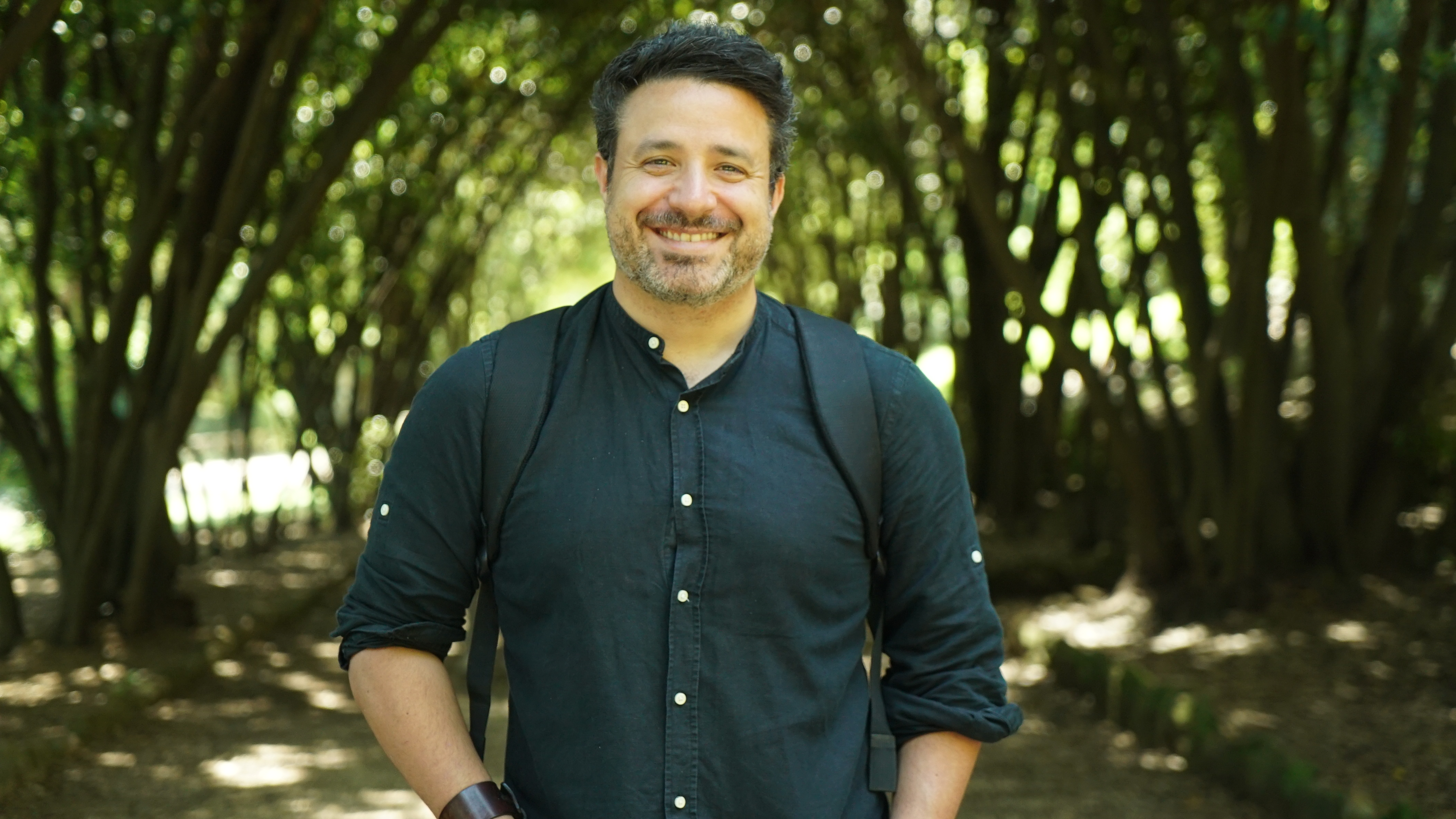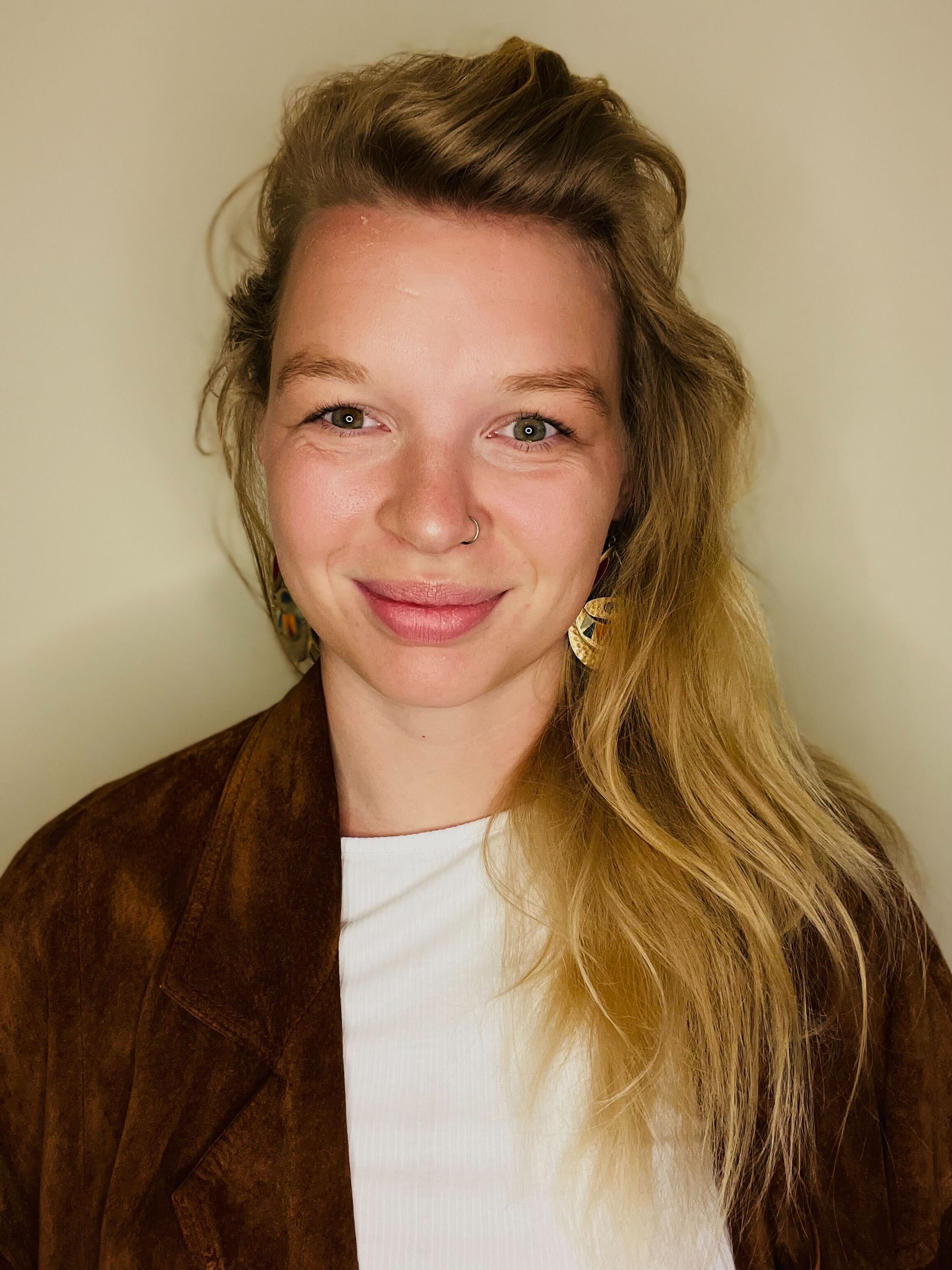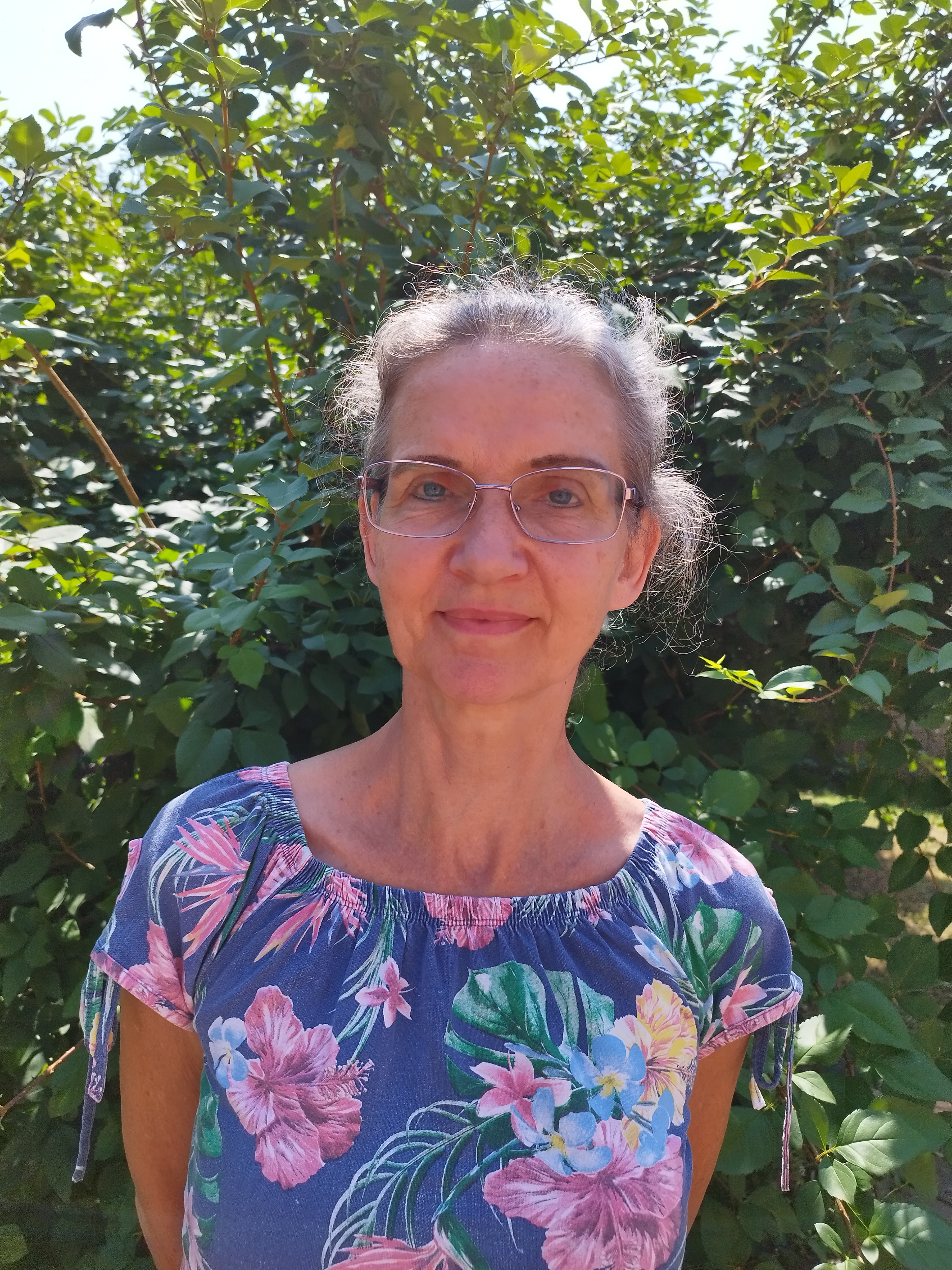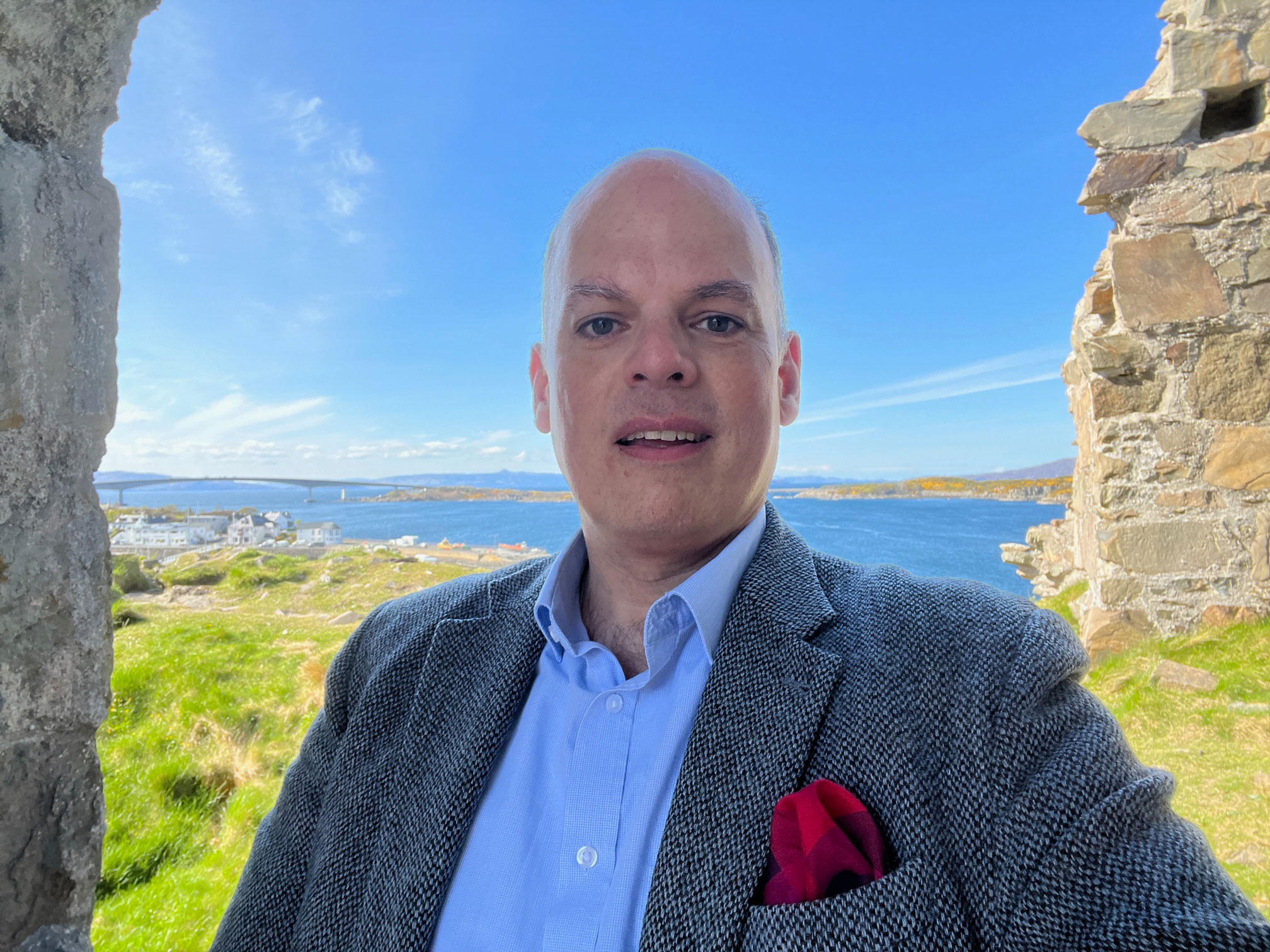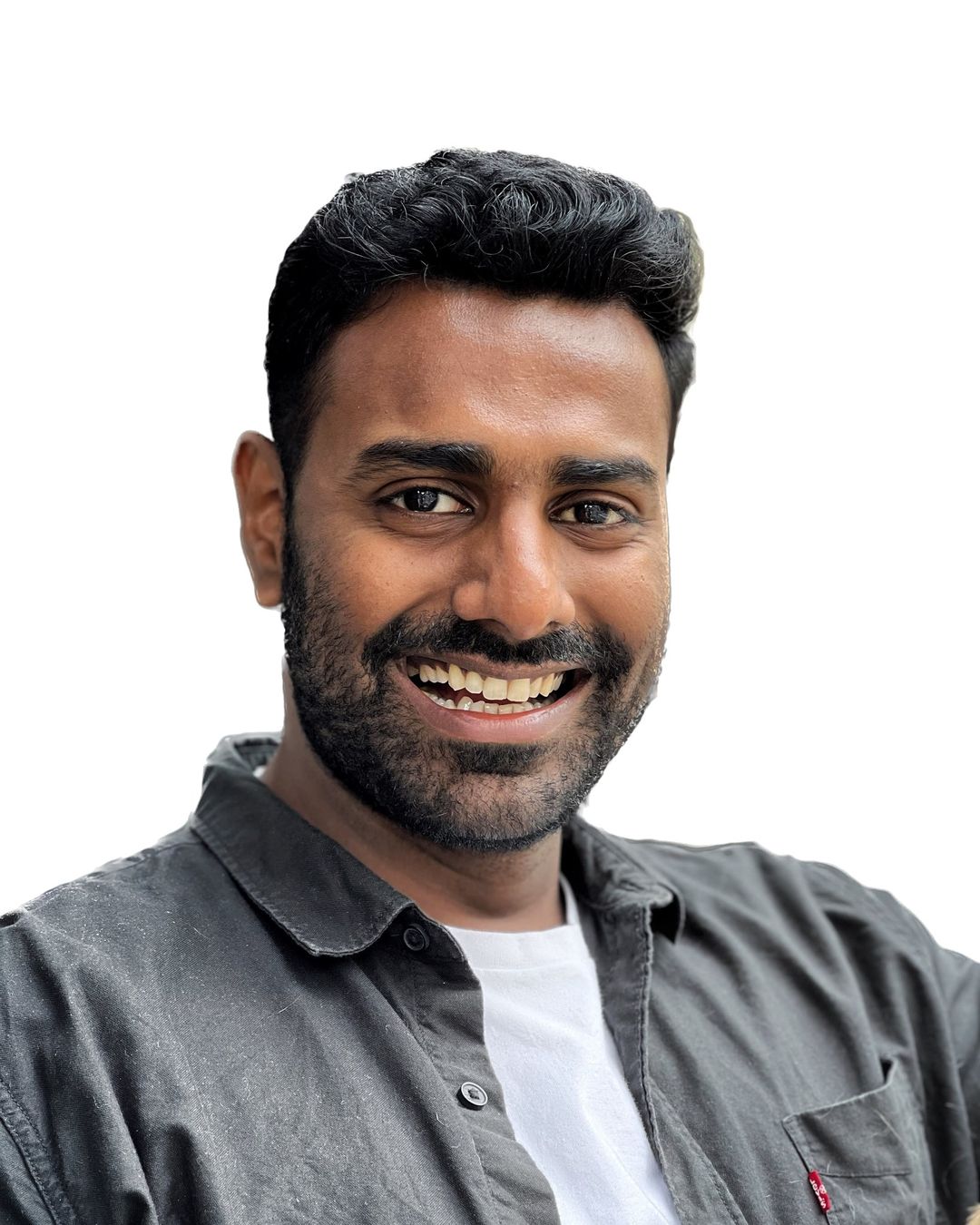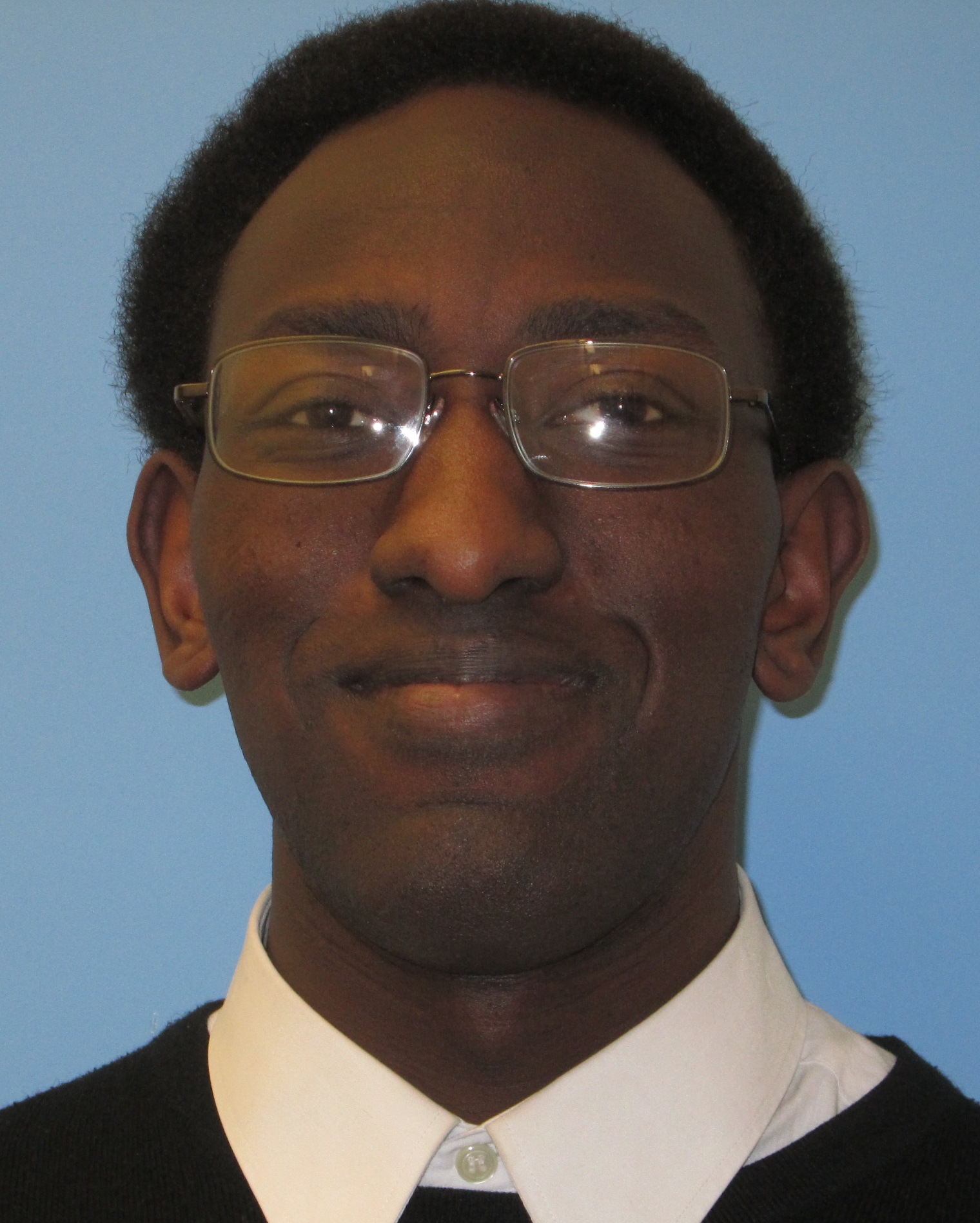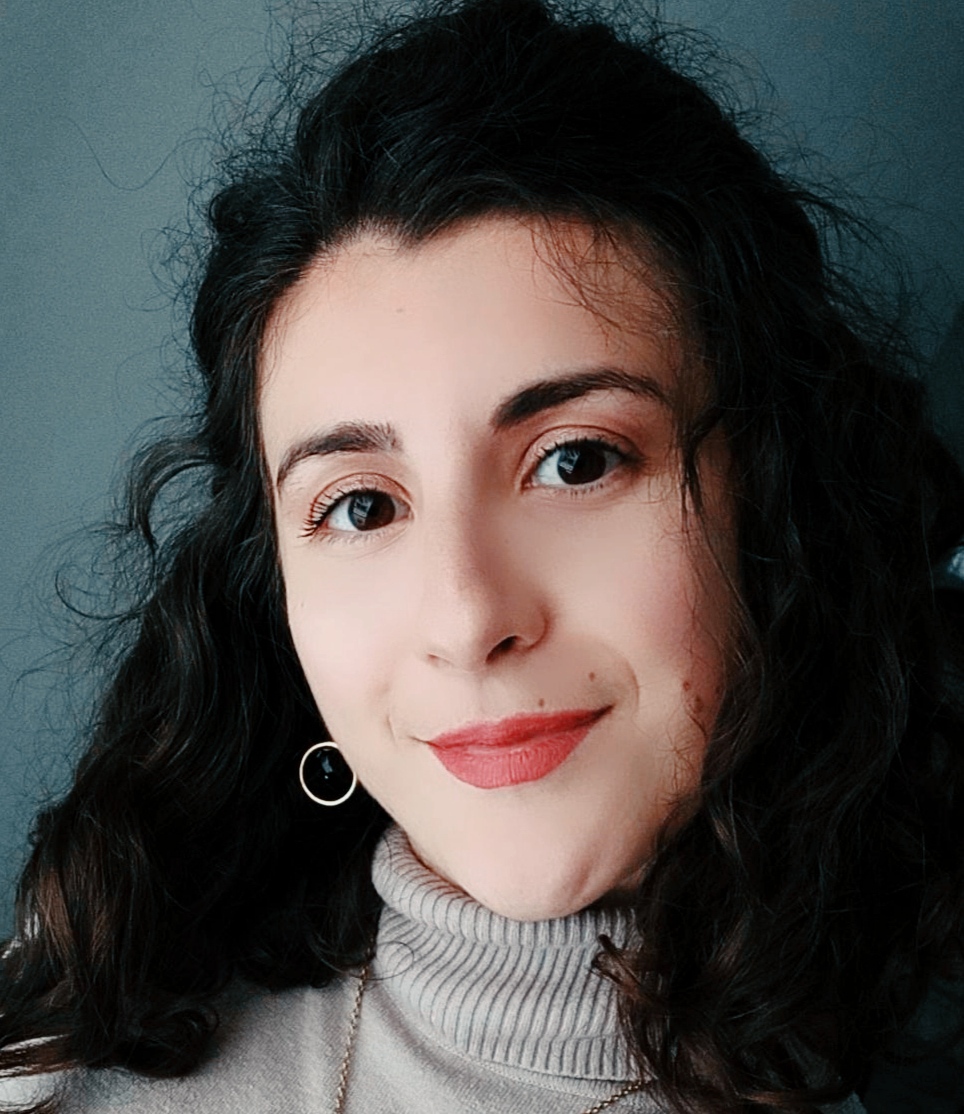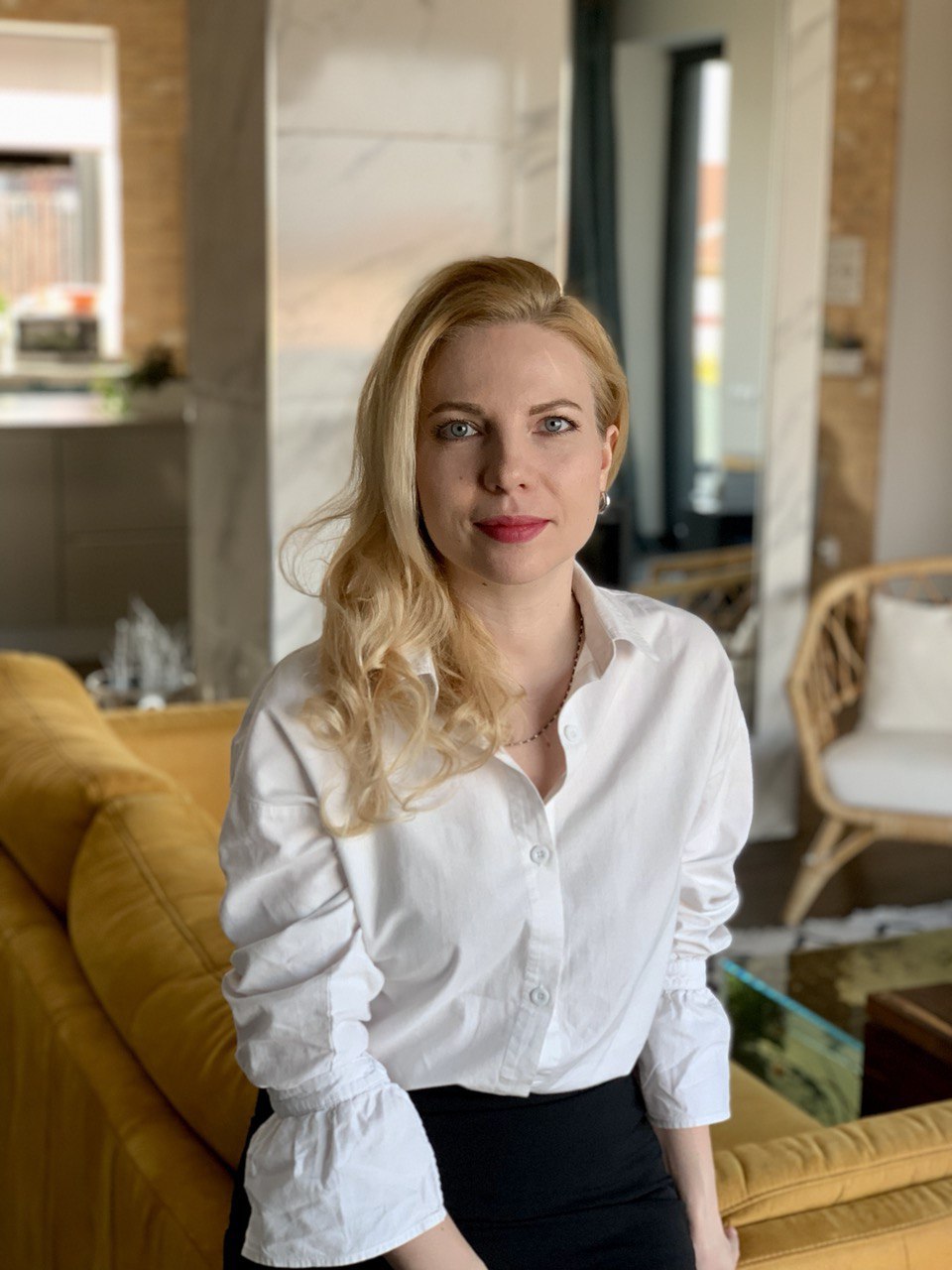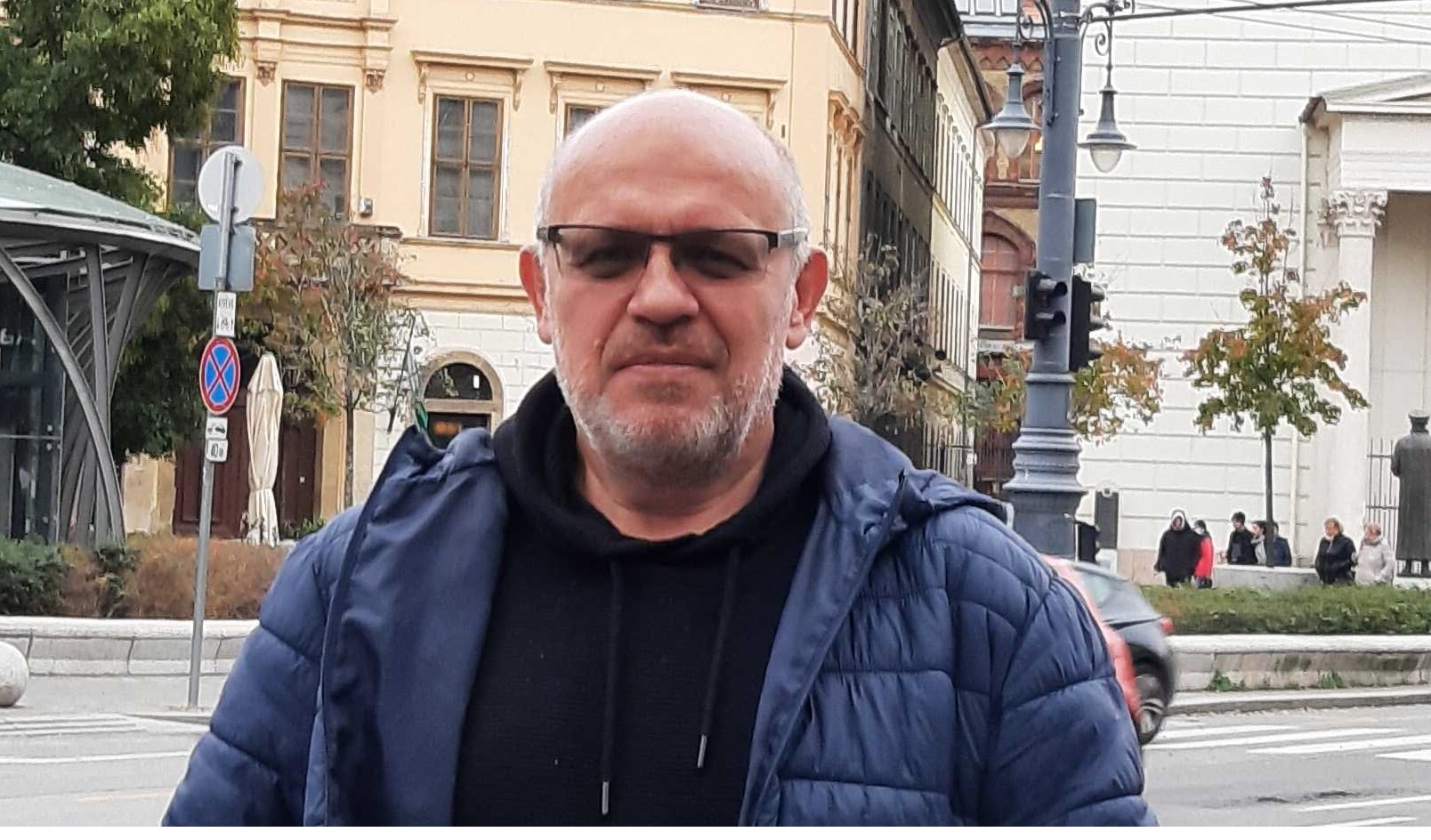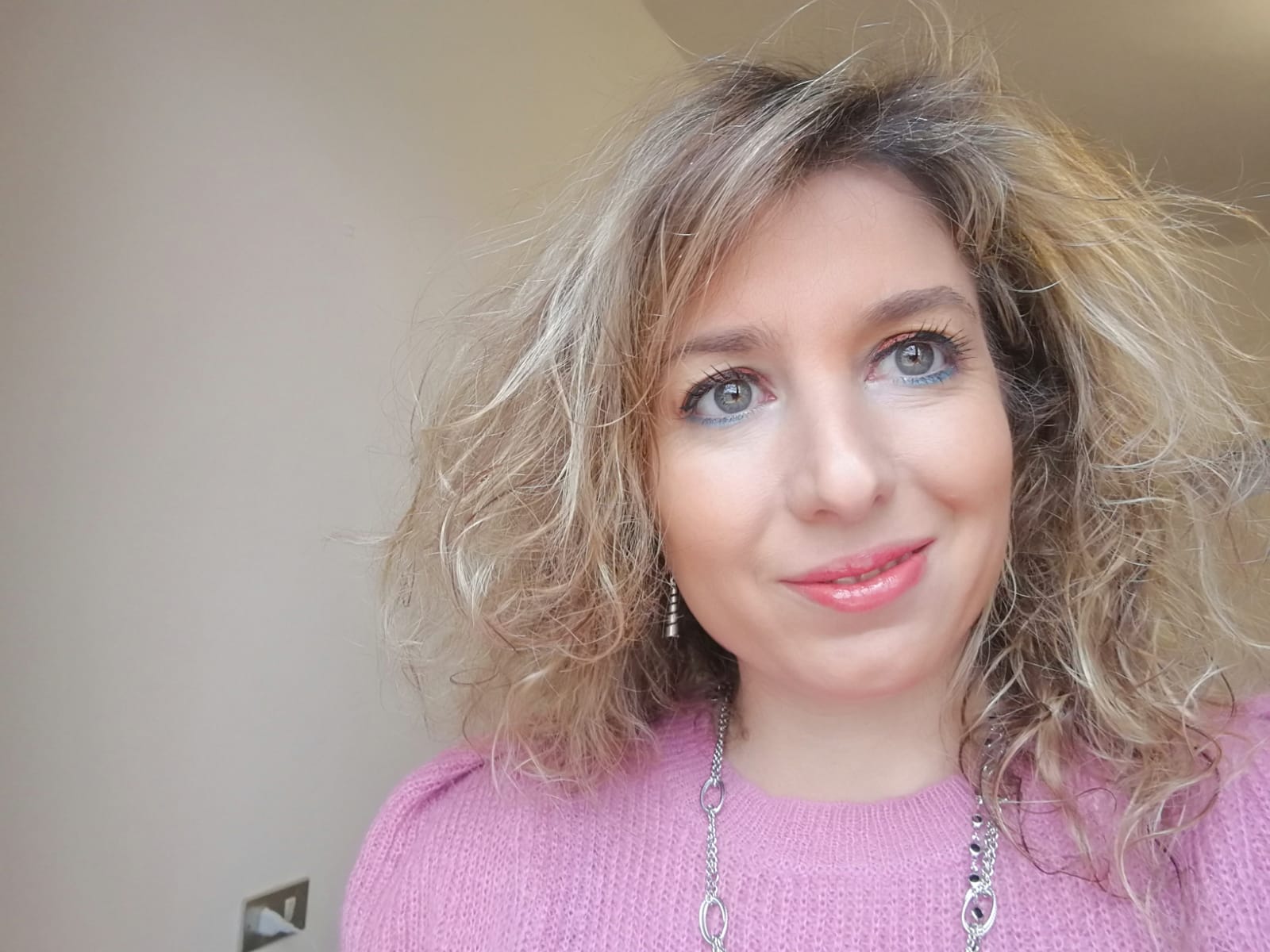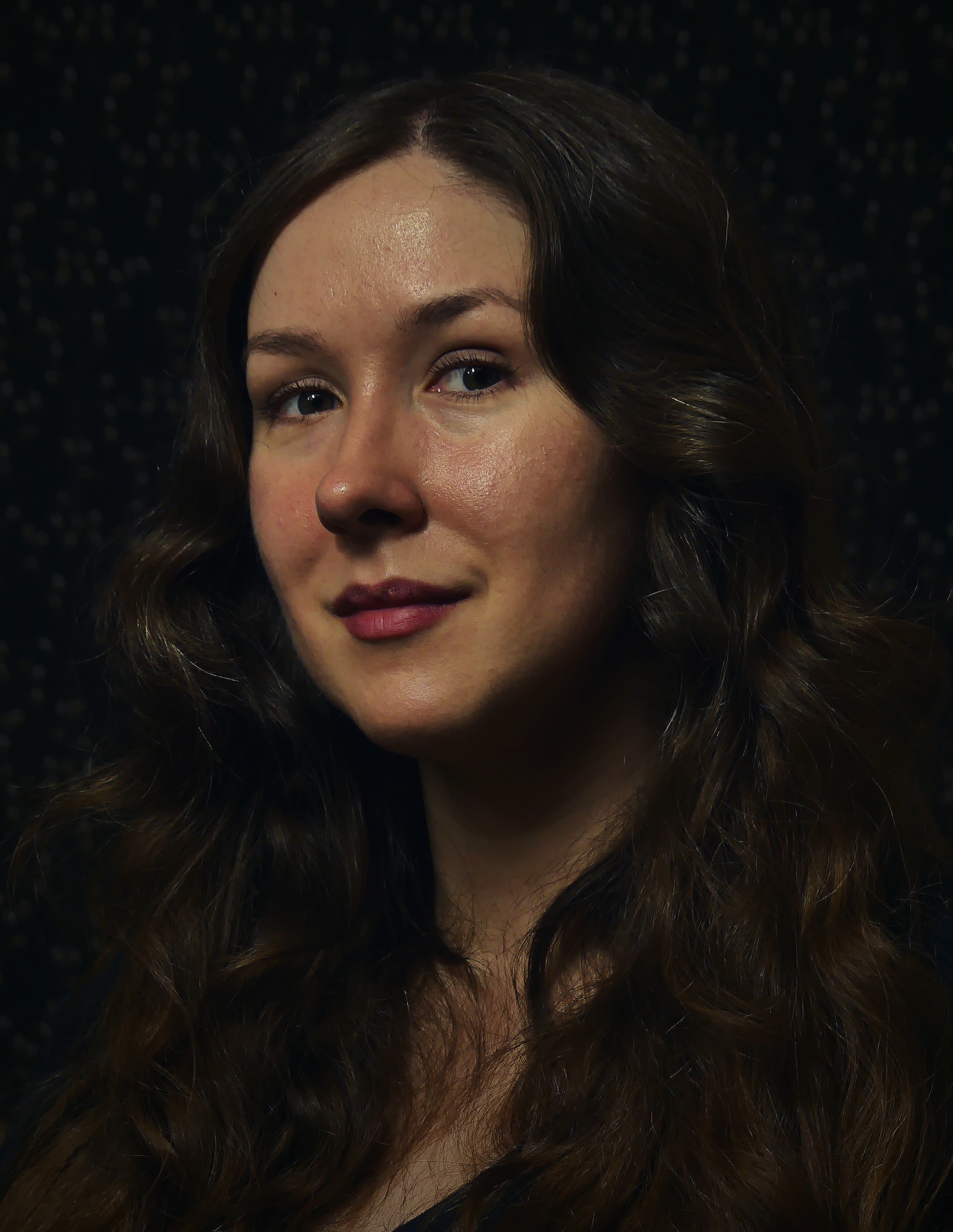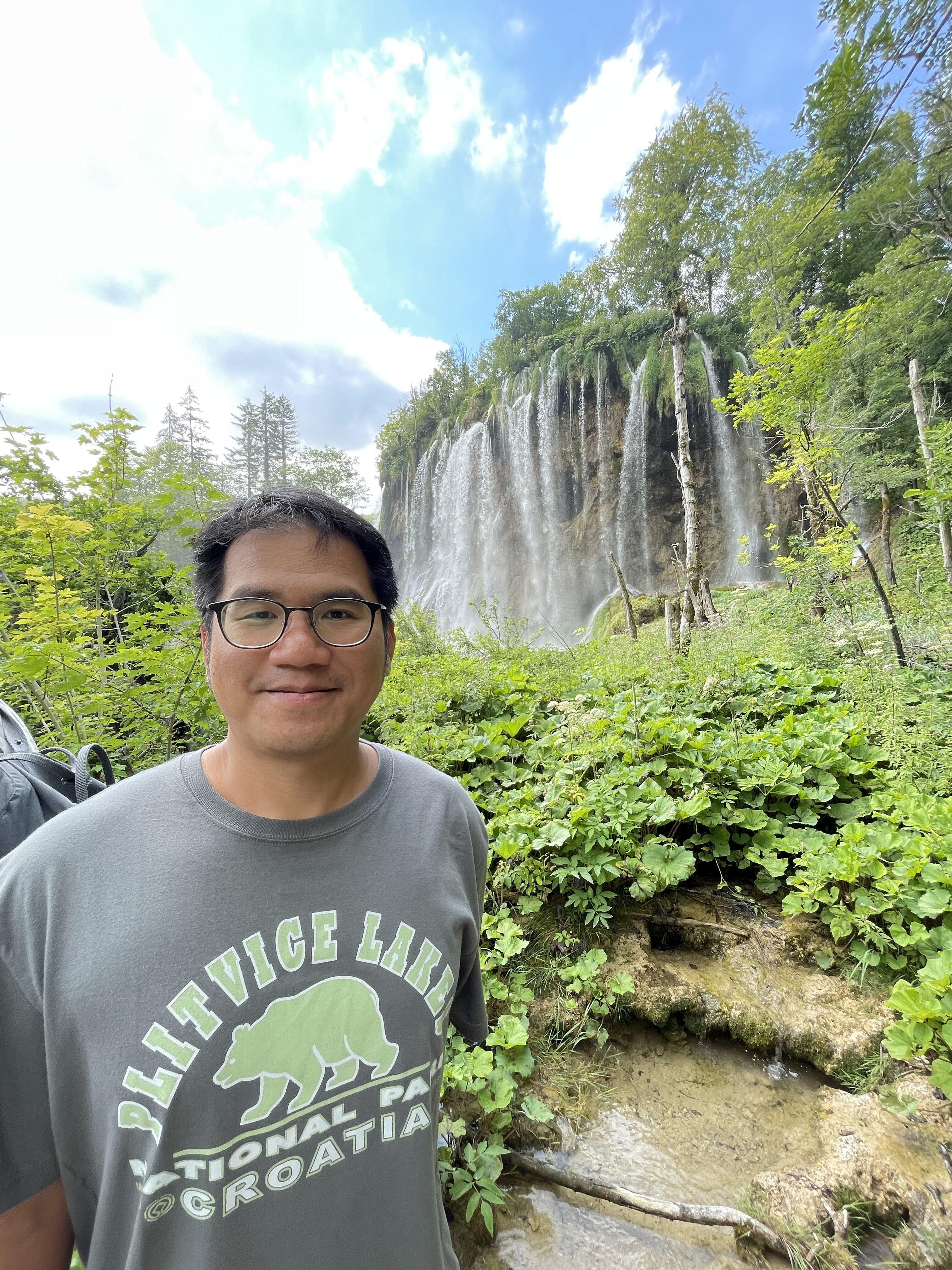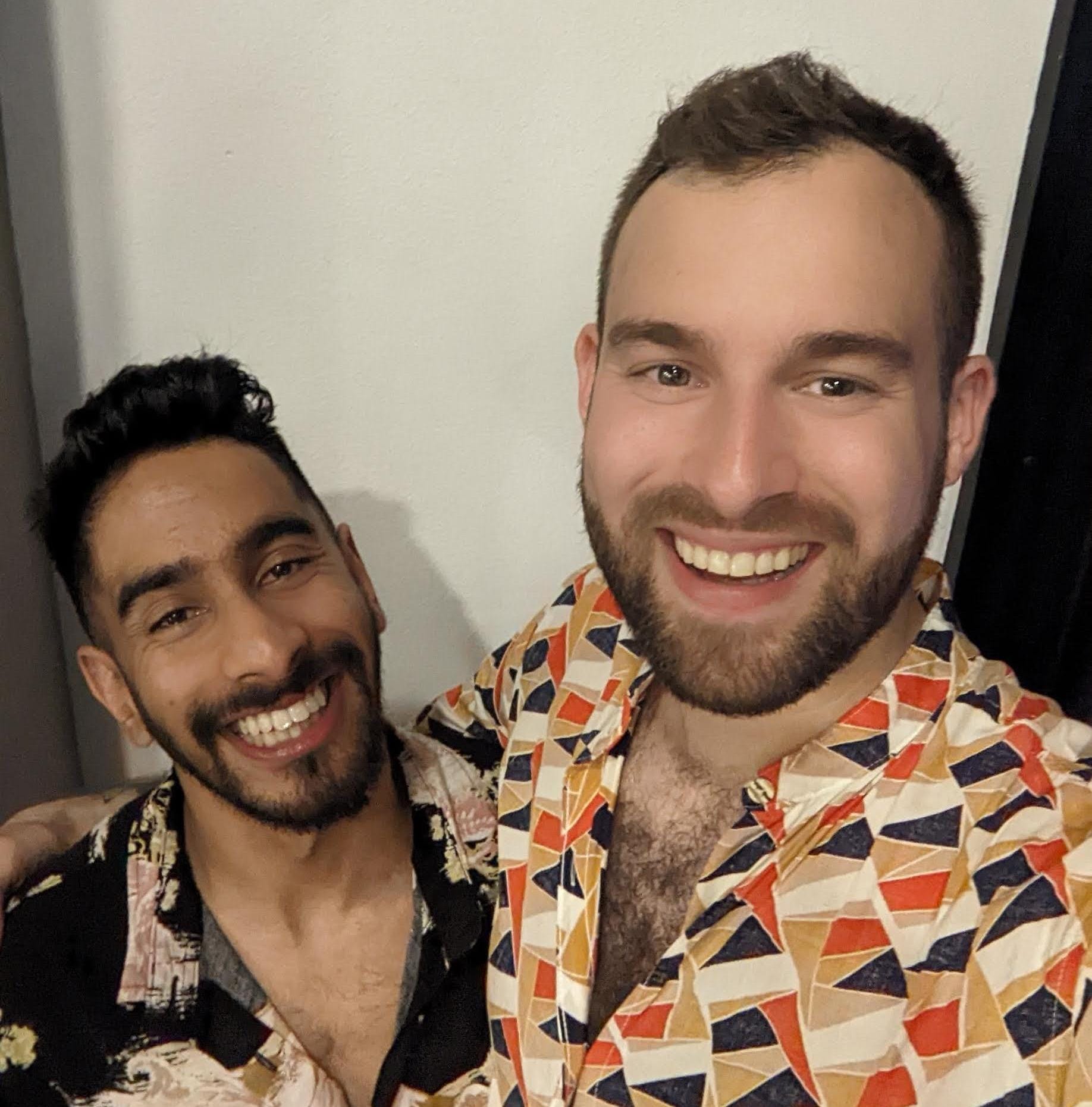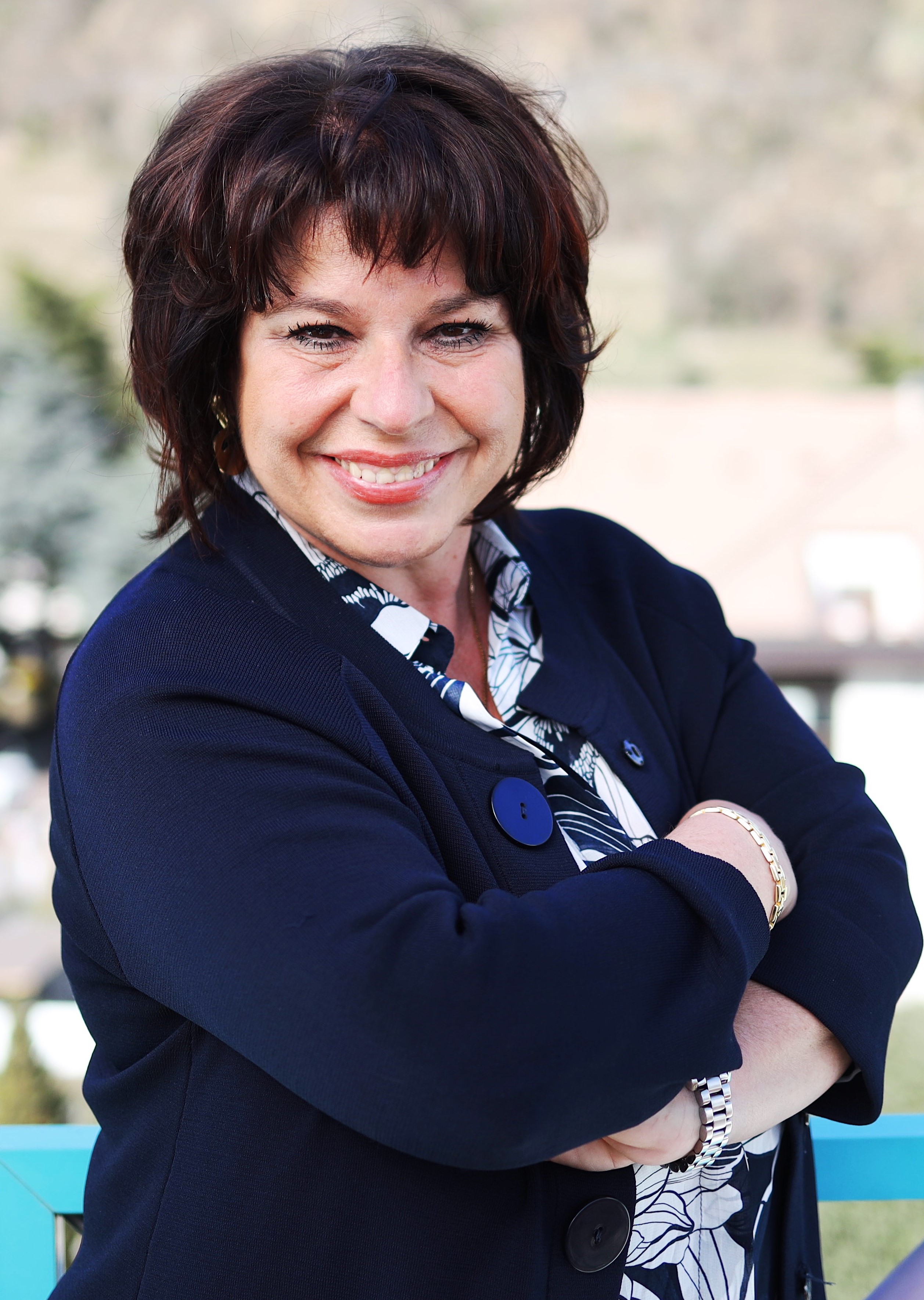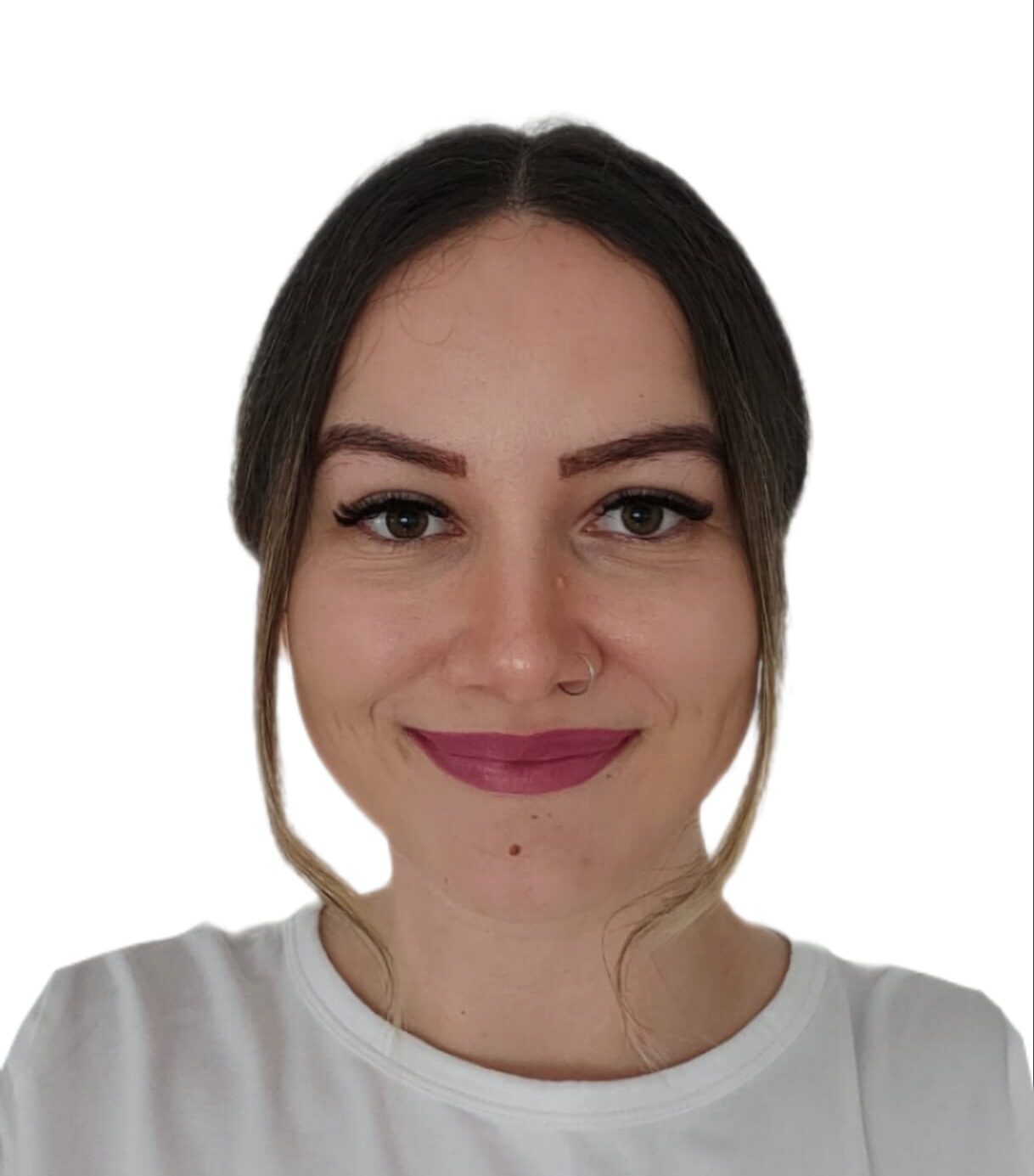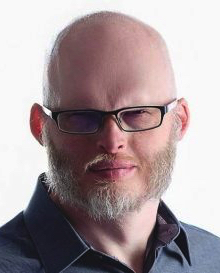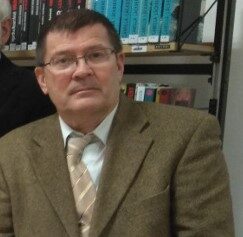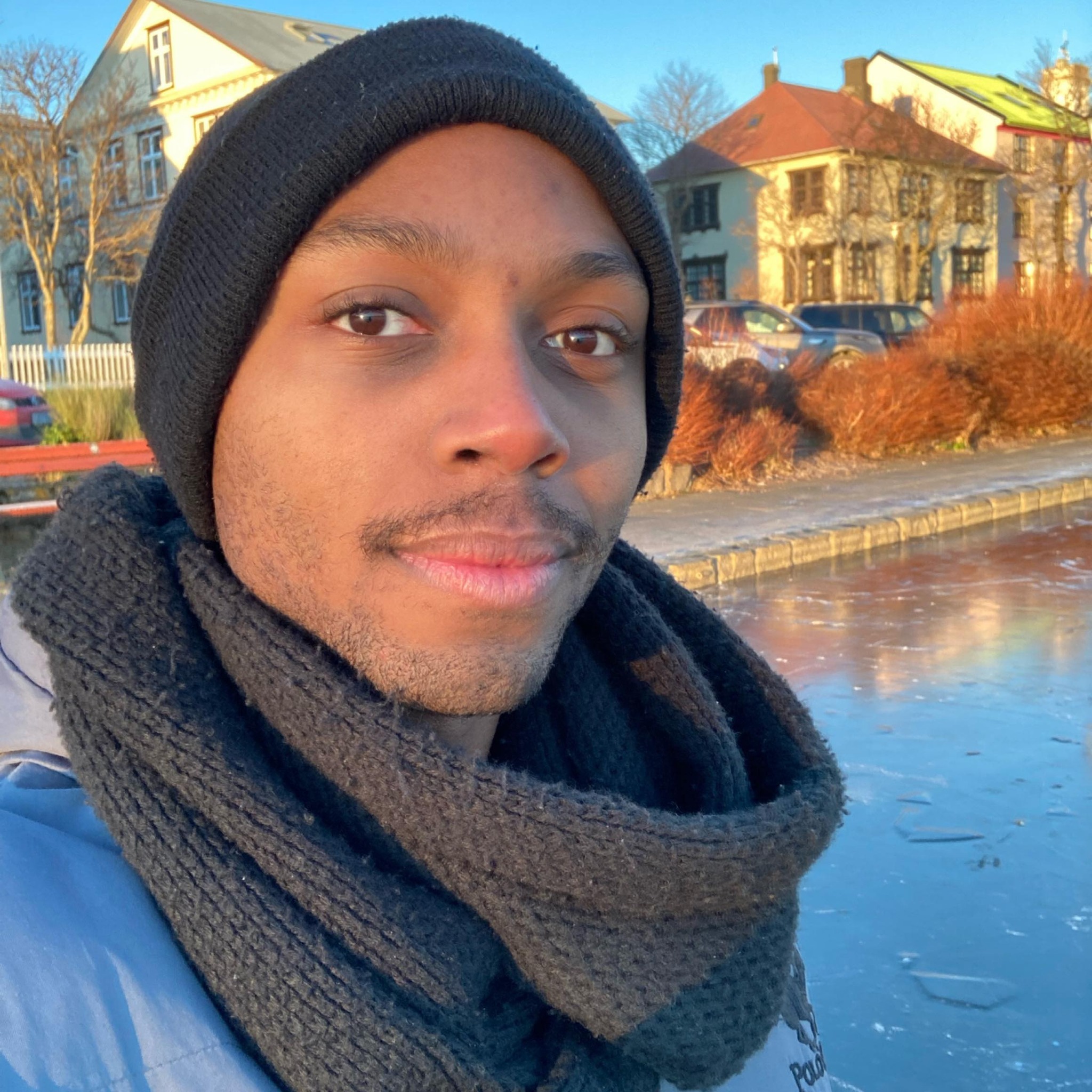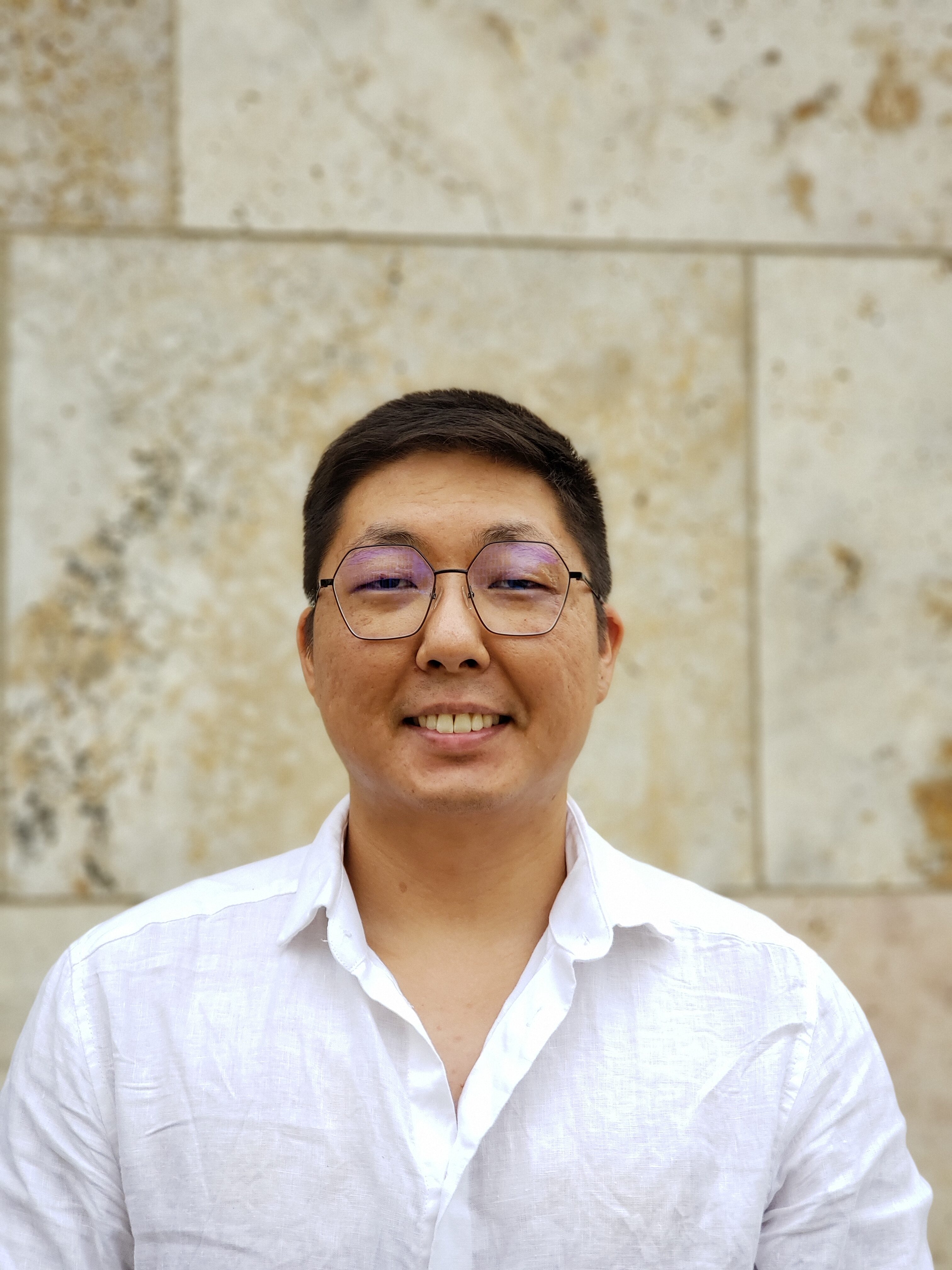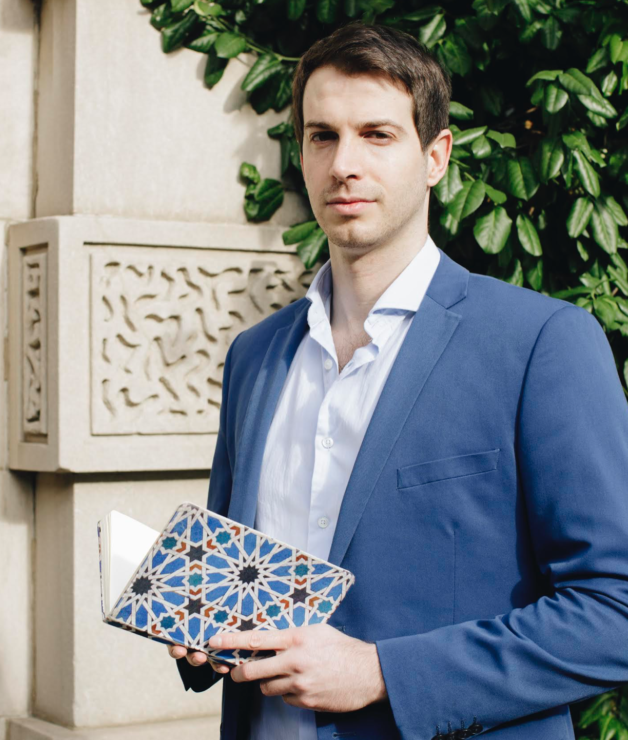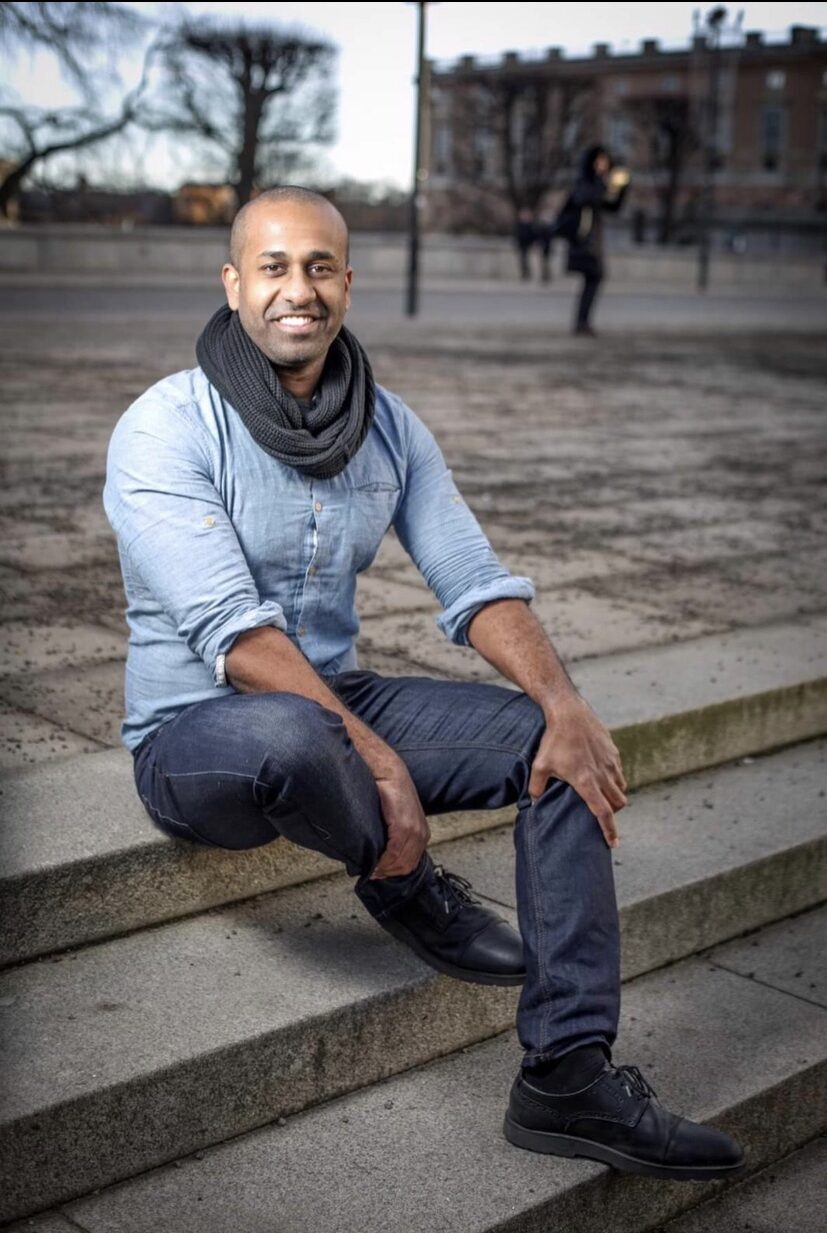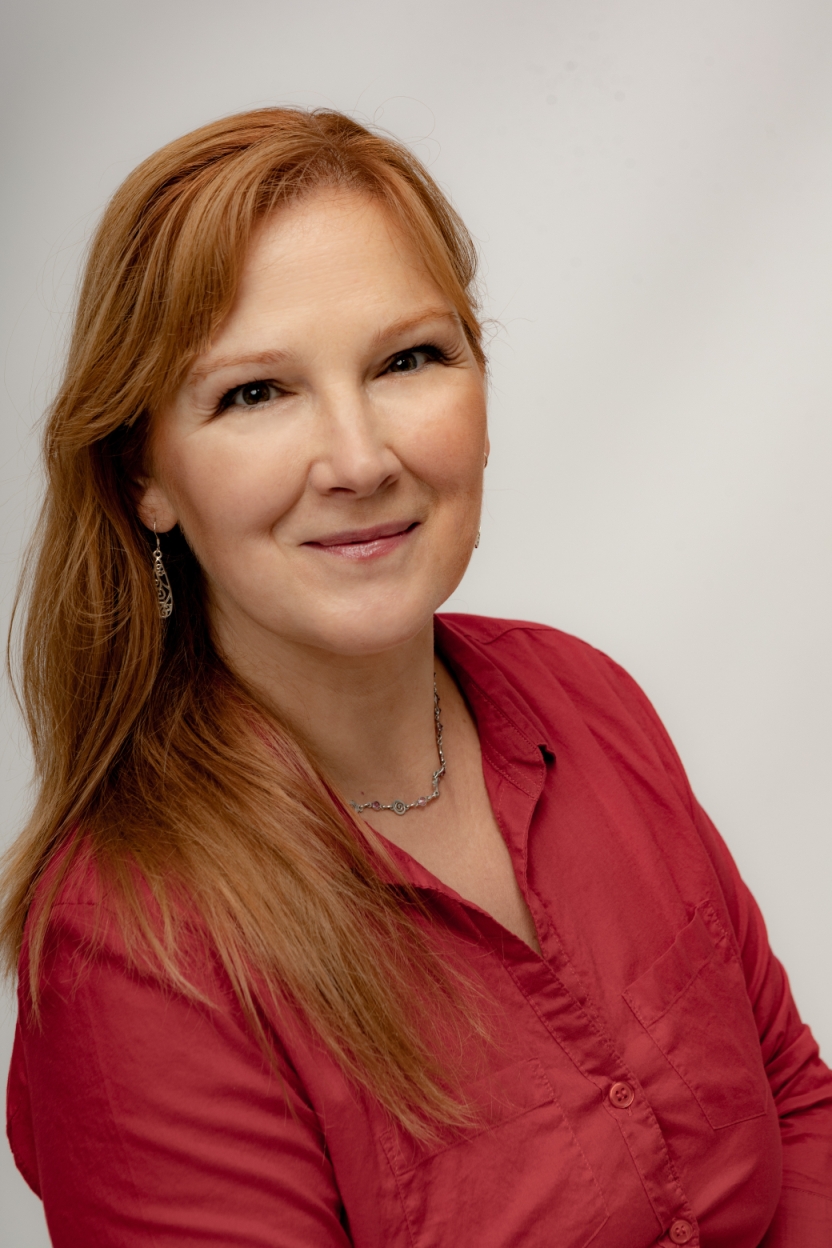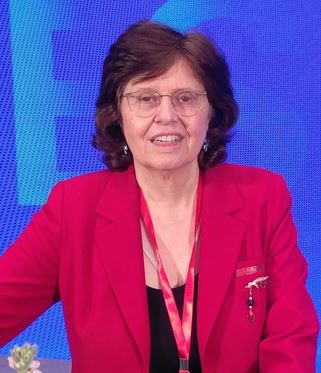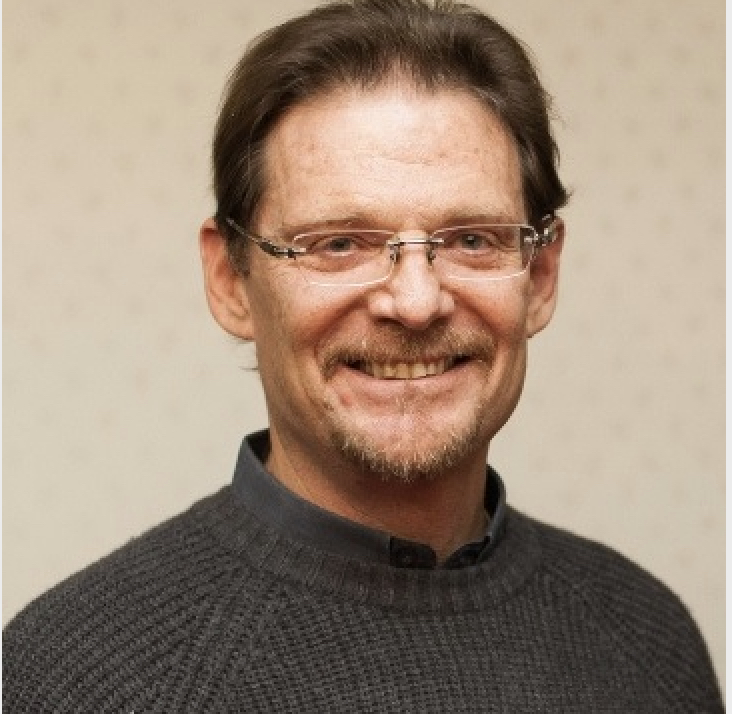Budapest – Programme & Speakers
Registration
Opening Ceremony
A 30-Year Journey Revealing the Keys to Native-Language Fluency Through Passion and Immersion
Embark on a 30-year journey with Luca Lampariello, the esteemed polyglot, at the Polyglot Conference in Budapest. Through passion and immersion, Luca unveils the keys to achieving native-language fluency. Discover the transformative power of cultivating a deep love for languages and immerse yourself in interactive examples and practical advice. Luca shares personal experiences, highlighting the role of immersion in language acquisition, while addressing challenges faced along the way. Gain invaluable tips to optimize your language learning process, from vocabulary acquisition to mastering grammar. Join Luca Lampariello, an influential figure in language learning, and unlock the secrets to lifelong language fluency.
Aprender idiomas en un mundo digital: cómo TikTok puede ayudarnos a aprender idiomas
Ya antes de la pandemia, nuestro mundo ha ido cambiando hacia un mundo cada vez más digitalizado. Esto significa que nosotros, como profesores de idiomas y estudiantes de idiomas, tenemos y debemos adaptarnos. En esta ponencia, intentaré hacer un análisis rápido de TikTok como plataforma general, pero más profundamente como plataforma de aprendizaje y, más aún, de aprendizaje de idiomas. ¿Cuáles son los argumentos a favor y en contra? ¿Cuáles son los miedos y cómo podemos superarlos? ¿Cuáles son las características de estos vídeos? ¿Cómo podemos incluirlos en nuestro recorrido tradicional de aprendizaje de idiomas? ¿Qué hay que tener en cuenta a la hora de consumir y producir vídeos de aprendizaje de idiomas en una plataforma como TikTok (o Instagram)? ¿Cómo podemos utilizar las redes sociales para mejorar nuestro aprendizaje y enseñanza de idiomas?
Kontrastive Linguistik: Ungarisch und Deutsch
In diesem Vortrag nehme ich euch mit an die Uni, ich zeige euch, was die Germanistikstudenten in Ungarn lernen. Ich finde Sprachwissenschaft spannend und hoffe, dass auch ihr Spaß daran haben werdet. Ich erzähle euch, wofür man kontrastive Linguistik gebrauchen kann und wie man zwei Sprachen vergleicht. Ungarisch und Deutsch sind ziemlich unterschiedlich, sie gehören zu verschiedenen Sprachfamilien und zu verschiedenen Sprachtypen. Trotzdem gibt es viele Ähnlichkeiten, denn die gemeinsame Geschichte in Europa hat ihre Spuren in der Sprache hinterlassen. Zum Schluss analysieren wir drei ungarische Sätze, die hoffentlich für euch alle nützlich sein werden, wenn wir uns schon hier in Ungarn treffen. Ich spreche langsam und habe viele Bilder, damit ihr mich auch dann verstehen könnt, wenn euer Deutsch noch nicht auf dem höchsten Niveau ist.
What level of support should we afford minority languages? - Comparing Germany and the UK
Why should we waste limited government resources and try to keep minority languages on life support when many of them are going to die over time anyway? It may sound plausible that health spending e.g. is more important than culture. But the German constitution states that nobody should be discriminated because of their language and that Germany advocates for justice in the world. One may wonder whether this applies to its native minorities, too. This talk will look at the example of the Frisian minority in Northern Germany. In the large majority of schools Frisian is a voluntary after school subject if it is offered at all. Public service broadcasting in the language is almost non-existent. Could this constitute cultural imperialism, be discriminatory and thus be anti-constitutional? If so, whose fault is it? For a minority of 10,000 speakers a number of organisations are competing for 350,000 Euros of public money p.a. On the other hand the Western Isles Council in Scotland took the progressive decision to make Gaelic medium education the default position and parents have to opt out if they want their children to be educated in English. The BBC run a Gaelic language radio and tv station and overall ca. 30m Euros are invested in the language p.a. Is that too much for 60,000 speakers? Also learn a bit about the cultures and a few words of Gaelic and of the biggest Northern Frisian dialect of Fering from the quadrilingual island of Feer/ Föhr.
A Dive into Dravidian: Unraveling South India's Linguistic Tapestry
What we refer to as ‘India’ today is an English name given, after a river that flows outside the country. Two notable ancient language families have given birth to modern day Indian languages: Indo-Aryan Languages (Hindi is a well known descendant) and Dravidian (Tamil is well known descendant). We will focus on the Dravidian tapestry in this talk, this rich plateau that I’ve had the privilege to be raised in. I speak 3 out of 4 Dravidian languages, all of which are classified as classical Indian languages (there are 6 in all of India). To qualify, a language needs to be more than 1500 years old, have a body of ancient literature that’s not borrowed, and have distinction from a modern offshoot. While the oldest Kannada inscription is from 450 AD, the primary mode of preservation for Kannada has been folklore. As a child, I memorised a lot of ancient Kannada poetry, works of a poet ruler “Bassava” which include stories, and moral values, excerpts of which will be in my talk. I shall also spend time talking about the rich diversity of the Kannada state, Karnataka, home to languages like Tulu that my dad speaks, Kodava, an endangered language from Kodagu, that has more in common with Tamil, but is spoken in Karnataka, Urdu that was installed during the reign of a Persian dynasty and Konkani which is an Indo- Aryan languages spoken in the coastline of Karnataka and celebrates Portuguese borrowings from the 1500s. I may not have the time to go into similarities between modern day kannada, telugu, tamil and Malayalam, but this is an avid sport we practice at home, as my dad is Tamil, my mum Malayalee and I the Kannada boy.
Comparing the phonology of multilingual Luo speakers
This talk looks at the language Luo which is mainly spoken in Kenya and Tanzania. This research was done for the dissertation of my Linguistics postgraduate degree. I mainly explored how languages like English and Swahili affected how people pronounce certain words in Luo.
Pontic Greek: History and culture.
Pontians are an ethnic Greek subgroup, indigenous to the region of Pontus, in north-eastern Anatolia and the eastern Turkish/Caucasus region. Pontian Greeks had been forced out of their homeland about a hundred years ago, nevertheless, Pontic Greek, the oldest surviving Greek dialect, is still spoken in Greece, Turkey and Russia. It was formed over millennia since the Ionian colonization along the southern Black Sea shores around the 8th c. BC. According to linguistic research, the dialect was influenced by the vocabulary of the Genoese and the Venetians of Trebizond. It is also worth to mention that the individual Pontic Greek varieties have been exposed to strong influences of the respective umbrella language and have been developing differently due to the wide spatial distance. Pontic Greek is currently spoken by about 778,000 people worldwide. Although many Pontian Greeks had immigrated to northern Greece, today only about 200,000 to 300,000 are considered active speakers of the language. Pontic Greek has a rich oral tradition, including folklore dances and songs which are particularly popular in Greece especially in weddings and on Easter Sunday. There is also some limited production of modern literature, including poetry collections, novels, and Asterix comic books translated into Pontic Greek. A few examples of song lyrics as well as information on morphology comparing to modern Greek will be included in the presentation. Last but not least 3 testimonies of native speakers of similar ages from both regions can be found in the research.
Group Photo & Lunch
Transforming Limiting Beliefs in Language Learning
Transforming top limiting beliefs in language learning to supportive perspectives in an engaging format of metaphorical associative cards. Beliefs are thoughts that we firmly believe, consciously or subconsciously, and we do not even question them. Our beliefs about the language we learn, its culture, the process of language learning, our possibilities to integrate the language into our lives, our abilities, our responsibility for the result – they all project our result. They program our failure or our success. They also project the process of learning – too difficult and unpleasant, or exciting and efficient. When we become aware of our limiting beliefs and transform them to supportive ones, we can boost our progress in language learning by 6 times and even more. Therefore, this is a really strategic question to explore every time we learn a language. We can do it with a coach or with special metaphorical cards that the team of professional coaches of Language Coaching Academy has developed. These are 80 cards with top 80 limiting beliefs in language learning – on one side and corresponding 80 supporting beliefs on the reverse side, including questions that help us expand our view about those thoughts. Anna Bakova will share effective ways to transform limiting beliefs into supportive ones, including how to work with this set of metaphorical cards.
The Rusyns - an Enigmatic Slavonic People in the Centre of Europe, or Unknown Slavs?
Their language and culture yesterday and today. The Rusyns are an autochthonous Central European ethnic group, living in Ukraine, Poland, Slovakia, Hungary, Romania and Serbia. Many linguists consider Rusyn/Ruthenian the 4th East Slavonic language, though there exist at least 4 variants of (codified) Rusyn language. Sunethnic groups of Rusyns – Lemkos (Polish and Slovak), Dolyniany, Pannonian Rusyns, and others. Boikos and Hutsuls – can they be called Rusyns too? Plural self-identity of (many) Rusyns. Rusyn as the most archaic surviving East Slav language. Hungarian and German (via Hungarian) borrowings in Rusyn. The linguistic border between East Slovak and Rusyn vernaculars. Pannonian Rusyns – East Slovak substrate with Ukrainian and Serbian loan-words, written in Cyrillic and definitely considering themselves as belonging to East Christianity (Greek / Byzantine rite Catholic).
The role of mindset in language learning.
It often happens that people learning foreign languages are discouraged by not seeing the results they were hoping for. Finding efficient language learning techniques is crucial to maintaining the motivation high and creating sustainable habits, and sticking to them is essential for one’s motivation. In an era when people want everything immediately, despite the huge amount of resources available, many individuals seem to struggle more than before when it comes to learning languages. Until some years ago, the main obstacle was that one’s learning method was not practical and he could not structure his study time according to his learning goals. More recently, the problem seems to be the loss of self-discipline and a growth of anxiety, which has a significant impact on one’s mindset, including when it comes to learning languages. In this presentation, the speaker, on the basis of her research and case study regarding the role of mindset and language resources in contemporary times, will give some useful tips and techniques to overcome the recurrent obstacles many people encounter when learning languages.
The Baltic Languages
Some linguists and philologists consider the Baltic languages to be perhaps the most archaic Indo-European languages and assume that they might be very beneficial for scholars in their attempts to reconstruct the Proto-Indo-European language. Usually, the Baltic languages are subdivided into Western, Eastern, and Dnieper Baltic. In my presentation, I will focus on three of them – Prussian, Lithuanian, and Latvian. The Prussian language was the last Western Baltic language that became extinct during the 18th century. A few texts (mostly Catechisms) written in Prussian are known to exist until this day. Nowadays, officially, scholars talk about just two living Baltic languages – Lithuanian and Latvian. Both of them are classified as Eastern Baltic languages and, in total, have approximately 4.5 million speakers. There are also some speculations that Latgalian spoken in Latvia and Samogitian spoken in Lithuania might be another two separate Eastern Baltic languages with their own peculiar vocabularies and grammars. In my presentation, I will discuss the similarities and differences between Western and Eastern Baltic languages and will try to answer the following questions: 1) How hard and time-consuming is it to learn Baltic languages? 2) Can Latvians and Lithuanians understand each other, and can they also understand texts written in the Prussian language? 3) How beneficial can be the knowledge of Baltic languages in studying other foreign languages?
Designing a social interaction-based immersion program for revitalizing the Paiwan Language
Taiwan, alias Ilha Formosa, is the most likely candidate of the “urheimat” of the Austronesian languages. However, at the current state, most Austronesian languages in Taiwan risk extinction due to rapidly declining number of speakers. Therefore, revitalization is deemed essential, and the authority has been injecting a lot of resources into indigenous language education. Paiwan is the 2nd or the 3rd largest Austronesian language in Taiwan with a population of about 100,000. However, most native and fluent Paiwan speakers are more than 60 years old and few of them are engaged in education. Thus, having an immersion program that promotes the interaction between the learners and the native speakers would tremendously benefit both of them and more generally Paiwan’s revitalization. I began to design and build a social interaction-based immersion program in a Paiwan community called Da-Niao in Taitong with some preliminary success. In this talk I will explain the program design and sum up results. On top of that, I hope our experiences can benefit all language learners of the world, including all of you in Budapest!
Misconceptions surrounding signed languages
In this talk, we aim to address the misconceptions surrounding signed languages, shed light on their distinct features, and emphasize the ways in which they differ from spoken languages. Despite the growing recognition and appreciation of signed languages, misunderstandings and assumptions persist, hindering effective communication and perpetuating stereotypes. It is crucial to break down these misconceptions and foster a deeper understanding of the richness and complexity of signed languages. We will briefly discuss the intricate grammar and syntax of signed languages. Through visual demonstrations and examples, attendees will gain insight into the sophisticated linguistic systems of signed languages. Unlike spoken languages, signed languages utilize space, facial expressions, and body movements as essential components of communication. We will illustrate how these elements contribute to the expressive nature of signed languages, challenging the notion that they can be directly mapped to spoken languages. By dispelling misconceptions and enhancing our understanding of signed languages, we can promote inclusivity, effective communication, and cultural appreciation. This talk will provide a platform for dialogue, encourage open-mindedness, and empower attendees to challenge preconceived notions about signed languages. Together, let us embrace the diversity and richness of signed languages, fostering a more inclusive and accessible society for all.
Kató Lomb’s Musings on Polyglots Compared With Findings from My Doctoral Thesis on Polyglots
Some claims on polyglottism by the Hungarian polyglot Kató Lomb (1909 -2003) found in her books Polyglot. “How I learn languages”, “Harmony of Babel: Profile of famous polyglots of Europe” and “With languages in mind. Musings of a polyglot“ are compared to findings in my doctoral thesis “What Polyglots Can Teach Us. Language Maintenance in Multilinguals from a Dynamic Model of Multilingualism Perspective” (2020). This talk will focus on terminological issues, on language maintenance, on the age factor, and on language talent.
How language learning leads to Adventure
Indiana Jones. Jason Bourne. James Bond. John Wick. And more. These larger-than-life characters traveled across the world on missions of many types, and all of them had the ability to speak multiple languages to swoon, manipulate, and free themselves from sticky situations. As language learners, we possess the unique ability to use our languages around the world to not only become one with a local culture, but also to enhance our exploration of the world and our interaction with its people. In this presentation, TJ Huizar, a nineteen-year-old adventurer and polyglot, will describe some of his stories from abroad. Tales from documenting dying languages in the Mayan jungles of Guatemala and surviving interrogation on the Russian border are just some stories from his adventures in over forty countries through dozens of languages. This talk will invite some of the world’s best language learners to experience the shocking limits of their linguistic skills through the lens of global exploration.
Registration
Anamaria Ștefania Balaș
An archaeologist, language tutor, and a language learner. Anamaria has a deep-rooted fascination for the past and a passion for linguistic exploration. She loves and admires threatened cultures and languages because they embody the richness and diversity of human expression.
Polyglot Strategies for Business Triumph: How Language Skills Fuel Entrepreneurial Growth
Learning another language is not only a superpower for communicating with a broader range of people but also a superpower for constructing and nurturing new ventures! Establishing and expanding a business involves a skillset that closely aligns with the process of language acquisition. Anyone aspiring to build a business can harness these skills to their advantage and apply them to the realm of entrepreneurial endeavors. Join me as we uncover the shared principles that underscore success in both language mastery and entrepreneurial pursuits and how language learning has helped me to build successful businesses. Whether you’re a seasoned linguist, a budding entrepreneur, or simply captivated by the nuances of skill enhancement, this talk pledges valuable insights that transcend the confines of conventional disciplines.
Cool Cornish Karma
Making sense of the world and its communities through language. Seeing how we can make a difference in our own unique way.
Esperanto in Hungary – Past-Present-Future
In the 136-year history of Esperanto, Hungary has played a determining role from the very beginning. It can be said that Hungary is an Esperanto superpower, with good chances for the future.
Meeting Me
Last year, I opened up to conference goers about my complex identity as an African-American-Icelandic man and how language has helped to shape this. I expressed that I have often felt barred from using language on my own terms due to the restrictions society places upon me as a black man, American, Icelander, etc. Therefore, I made the decision to learn Yoruba (one of my ancestral languages) in order to “reclaim” my heritage as well as take ownership over my use of language. I soon discovered that I was on my way to “reclaiming someone else”, since there was an apparent distance between me and Yoruba culture, so I just chose to be myself linguistically. This resulted in me feeling simultaneously liberated yet also even more alienated. As a “hail Mary” attempt to bridge this gap between me and my ancestral homeland, I will be traveling to Yorubaland in August. My talk in Budapest would be a brief summary on my talk in Cholula, revisiting major themes like language politics in the US and Iceland. My talk would then discuss my trip to Benin and how things relate to my last talk. Would my expectations be met? Would I fit in or stick out like a sore thumb? Why did I go to a country with only a relative handful of Yoruba speakers when there is a country right beside it with 40 some million? All of this and more would be addressed in my talk entitled “Meeting Me”.
Applying the 8 Classic Language Teaching Methods in the Classroom of the Formosan Indigenous Languages
Most language teaching and learning research and discussion have long been only focusing on the so-called “major languages” like English, French, Chinese(Mandarin), etc. However, teaching and learning indigenous language in fact involves very different challenges and requires a different set of skills due to the special social contexts of each indigenous language. Thus, simply applying the “textbook methods” to the classroom of an indigenous language is virtually impossible. As a researcher at “Indigenous Language Research and Development Foundation, I have been working on a methodology book for instructors of all the indigenous languages of Taiwan since 2022. In this, I’d like to share my findings during this process and examine the possibilities of applying “the 8 classic methods” to indigenous language teaching and learning.
The Secret History of the Mongol Language
The Mongolian language and its dozen or so alphabetical permutations with the classical, vertical script being the most famous one, has left its surreptitious-yet-indelible mark across the Asia and beyond as a language of cross-cultural administration, diplomacy, and liturgy of buddhist tuitilage not only on paper but also on etymological endonyms, hydronyms, and toponyms. The breadth and reach of Mongol emissaries and texts were flung far and wide across the 12, 13, & 14’th Centuries, even sparking inspiration in other scripts such as Hangul, whose stroke order was to an extent derived from the Mongol square script. Or how the Jurchen-Manchus decided to adopt the classical Mongol alphabet and its orthography for their own new script as the Manchu language shares exceedingly similar grammatical structures and vocabulary. Although the the umbrella term of the Altaic Theory or ‘Sprachbund’ has been mostly and arguably disproven, there are nonetheless undeniable linguistic and orthographic parallels and common threads between the plurality of Japonic, Koreanic, Turkic, and Tungusic languages.
Revitalising Endangered Languages Through AI
This presentation explores the role of Artificial Intelligence (AI) chatbots (ChatGPT 4, Bard) in revitalising endangered languages. Traditionally, training an AI-powered chatbot in a language drew upon massively large data sets; although this made it relatively straightforward to develop the chatbot’s ability to interact in major languages (English, Mandarin Chinese, Spanish), it was much more challenging to do so in the case of low-resource languages, endangered languages being a case in point. Recent developments have greatly facilitated training AI chatbots on the basis of a rather limited dataset, vastly reducing the required amount of manual labour, which includes data sourcing and preparation. In this presentation I will discuss specific techniques (e.g. Open AI’s Reinforcement Learning from Human Feedback -RLHF-), topics (voice recognition, scripts) and case studies, including minoritised languages (Icelandic), diasporic (Ladino), native American (Chinook Jargon,) and further indigenous (Nuu-chah-nulth) ones. Training chatbots like ChatGPT 4 or Bard to understand, summarise, generate and predict new content in endangered languages can be extraordinarily beneficial to their preservation and revitalisation. Being able to read material in their endangered languages, and of course to practise these languages with an AI chatbot can empower the remaining speakers to fight intergenerational language loss and counter individual language attrition, thus also coming to see their languages as part and parcel of today’s reality, rather than archaic, dying entities.
Group Photo & Lunch
Neologism in the age of feminism in the Hebrew language
Is the Hebrew language coequal in terms of gender equality ? Words are created and used as an expression for worldviews and ideologies. words are the final product of subjective understandings of reality. Therefore, as a whole : words are the mirror that reflects the cultural values of a society. The Hebrew language, as a Semitic language, naturally emphasizes patriarchal structures within it. In Hebrew, every noun and every verb is classified as having a grammatical gender. For example: “a drawing” is male, and “a picture” is female within its grammatical genders. In English, for example, there is no such classification, except when it comes to people and animals. Such a binary linguistic classification, which divides everything into male or female, contributes to the (conscious and unconscious) assumption that the entire world is organized in a clear gender division. Based on this division, it is easy to establish a sweeping distinction between women and men, females and males, and between boys and girls as “a natural" division, and not as a product of culture and society. The rules of the Hebrew language place the female gender in a lower position than the male gender. For example: in the Hebrew language there is a systematic preference for choosing the masculine form, even when there is a feminine majority. This linguistic structure erases the presence of the female gender, and as such, conveys that the gender worth mentioning is the male. Another example, is the word for “Husband” in Hebrew, which translates into “ a master” or “an owner , or the word for “Female” which literally means “a hole” used in a synecdoche figure of speech to point to her sexual organ. With that said, how does modern day Hebrew deal with the patriarchal and hegemonic difficulties of the language? How do women choose to express themselves in Hebrew in a way that reflects them too, and not as an inferior being?, in this presentation I will address the different solutions and routes that women and feminists are trying to implement in modern day Hebrew in order to solve the gender inequality within the Hebrew language.
Language as a tool for integration / A nyelv, mint az integráció eszköze
Does learning a language fluently equal integration into a society? In what ways can learning a new language change the way we perceive our reality? In this talk, I will give you my personal story of social integration during my years as a foreign medical student in Hungary, and how it has affected my view on integration. It includes funny anecdotes, personal reflections and even some singing! A folyékony nyelvtanulás egyenlő a társadalomba való beilleszkedéssel? Milyen módokon változtathatja meg egy új nyelv tanulása azt, ahogyan a valóságot észleljük? Ebben az előadásban bemutatom személyes történetemet a társadalmi integrációról a külföldi orvostanhallgatóként Magyarországon töltött éveim során, és hogyan befolyásolta ez az integrációról alkotott nézetemet. Az előadás tartalmaz vicces anekdotákat, személyes elmélkedéseket és még éneklést is!
Why I decided to join ILDRF to save my mother tongue Hla’alua
Hla’alua (Saaroa), my mother tongue, is an endangered language spoken by an Austronesian people in southern Taiwan. With a population of less than 500 people, it has been extremely challenging for us to maintain the use of our own language in today’s predominantly mandarin-speaking Taiwanese society. At Polyglot Conference Budapest 2023, I would like to share my linguistic story with you and explain why I decided to join ILRDF to save my mother tongue.
Language Superheroes - Chidren's Brain as a Linguistic Treasure Chest
In my presentation, I’d like to express my enthusiasm for early foreign language learning. During my talk, I will focus on the language learning abilities and development of young children. I will discuss various aspects related to the topic, including the four fundamental skills (listening, speaking, reading, and writing), the roles of the two hemispheres of the brain, and the impact of stories, songs, and nursery rhymes. Furthermore, I will address the impact of puppets, which can be excellent instruments for practicing communication and linguistic expressions. I will examine how puppets can be incorporated into the language learning process and their positive effects on children’s communication skills and linguistic development. I will delve into the development of speech, sense of language, and motivation. These topics are crucial as they influence children’s language learning inclination and effectiveness. Overall, my presentation provides an opportunity to gain a comprehensive understanding of early foreign language acquisition and its significance. I hope that through this information, parents and teachers can better comprehend how to support young children’s language development and make language learning a joyful and engaging experience for them. The opportunity is in our hands to help our children to discover their own linguistic treasure chests.
Language maintenance through the lifespan
Maintaining language throughout life: Advice from an aging “hyperpolyglot” Everyone admires the people who learn 15, 20, 30 languages. They tend to be male, young, well-traveled, who learn fast and exude self-confidence. But how sustainable is the performance in multiple languages over the years? Forgetting is akin to a dirty word. Yet, in order to claim that we speak certain languages we must deal with forgetting. This is particularly important past the twenties, when the ability for easy memorization gradually declines. And the task becomes quite complex when large numbers of languages must be maintained. In old age these matter because they help retain brain functions. What is lost and what is gained over the decades? There is memory research and practical ways to put it to use. The presentation will introduce some memory concepts and suggest a roadmap to maintain and retain multiple languages throughout life.
Global Adventures and Language Learning before the Internet Age
The presentation offers a comparative exploration of the challenges and thrills of globe-trotting and language learning during the pre-Internet era of the 1970s and 1980s, versus the modern, digitally-enabled age. The presentation’s focal point is the speaker’s firsthand experiences traveling the world in the pre-digital era. With engaging anecdotes and historical insights, the speaker will transport the audience back to a time when traveling meant carrying hefty dictionaries and phrasebooks, making every linguistic interaction an adventure in itself. The speaker vividly recalls the struggle of maintaining communication when expensive phone calls and postal restante were the only viable options. At the heart of these stories are experiences that not only highlight the challenges of language learning but also offer a riveting account of the world’s changing socio-political landscape. From being arrested in Argentina during the “Dirty War,” to witnessing the birth of Solidarnosz in Poland and the death of Brezhnev in the Soviet Union, these global adventures underscore the stark contrast to today’s instant access to news and information. The speaker will further delve into the profound transformations brought about by the advent of the Internet, social media, free video calls, and platforms like YouTube, reshaping the landscape of language learning and global travel. “Global Adventures and Language Learning before the Internet Age” promises an intriguing journey through time, bridging the old and new world of language acquisition and international exploration. The presentation invites the audience to appreciate the evolution of learning and traveling, underscoring the influence of technological advancements on our global experiences.
Reasons (not?) to Learn a Language
In this globalized world, increasingly dominated by artificial intelligence, traditional reasons for learning languages have seemingly lost much of their value (or that’s what many people believe). But is it true that language learning is in decline because it’s no longer useful? I believe that’s not true…

